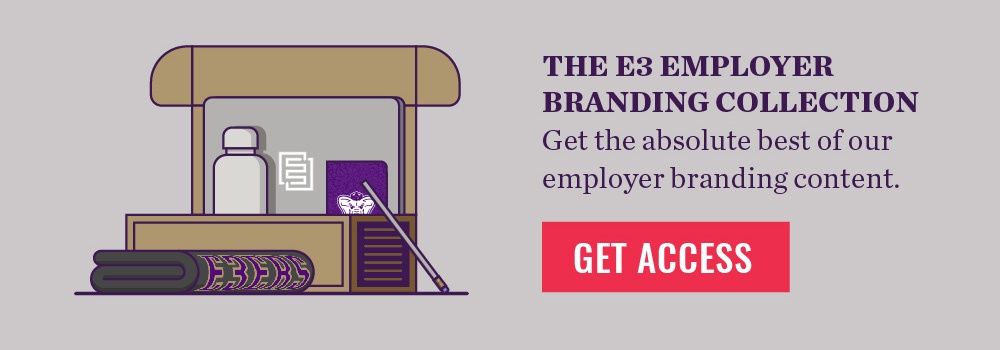The modern workforce is exploring some pretty uncharted territory when it comes to attracting and retaining talent. For example, it’s not uncommon to see companies with up to five generations of employees working side by side. We even have a father-son duo reporting to the Emplify office each day. Yes, the son calls his father “dad” in meetings. It’s pretty great.
This diversity in age and experience leads to a multitude of data reporting an alarmingly high rate of disengaged employees across the country. While far from the only factor, a largely multigenerational workforce poses unique challenges when it comes to providing opportunities for friendship, collaboration, and growth.
At Emplify, we recently dug into the engagement levels of 750 employees (at varying tenures ac
The modern workforce is exploring some pretty uncharted territory when it comes to attracting and retaining talent. For example, it’s not uncommon to see companies with up to five generations of employees working side by side. We even have a father-son duo reporting to the Emplify office each day. Yes, the son calls his father “dad” in meetings. It’s pretty great.
This diversity in age and experience leads to a multitude of data reporting an alarmingly high rate of disengaged employees across the country. While far from the only factor, a largely multigenerational workforce poses unique challenges when it comes to providing opportunities for friendship, collaboration, and growth.
At Emplify, we recently dug into the engagement levels of 750 employees (at varying tenures across their organizations) and surfaced some interesting trends around what different generations need from their jobs. These employees have all participated in the Emplify Insights™ survey solution, which compiles a quarterly engagement score and details results against 14 key drivers of employee engagement. This data was recently published in our Employee Engagement Trends and Indexes report.
Along with other employee engagement findings, we uncovered some pretty interesting data pertaining to the engagement of different generations of workers. For example, we discovered that:
1. No matter their age, almost 20% of employees could be disengaged at your organization right now.
While many of the employees included in our analysis scored as “moderately” and “highly” engaged, 18.4 percent of employees fell into the range of “disengaged” to “extremely disengaged.” While 20% may not seem like a lot, it does when you realize it means that, in a 50-person organization, 10 people may be going to work and doing the bare minimum to collect their paychecks and go home.
What’s more, the organizations included in our analysis represent a subset of the workforce that’s being led by executives who are already working to measure and improve engagement. That means organizations without an engagement measurement process and toolset may be experiencing even higher rates of under-the-radar disengagement.
And while a worker in the top 1 percent of productivity has been shown to add $5,000 in profit per year, a highly disengaged, “toxic” employee can cost companies as much as $12,000. It’s imperative that business leaders focus on decreasing the number of disengaged employees, and understanding the varying needs of different generations of workers can be a strong first step.
2. Older and newer workers may struggle with forming friendships at work.
Research has long shown that strong social connections at the office can boost productivity and passion, yet forming friendships and finding common ground is a challenge for many employees. Emplify’s report reveals a pattern that points to the bigger picture.
Employees in our sample who have been working at the same company for more than ten years are the least likely to feel connected to coworkers. “Friendship” and “shared values” were among the most frequently cited areas of disengagement identified in our analysis. On the other end of the spectrum, newer (and often younger) employees report high levels of friendship at work—but still struggle to find common ground with colleagues when it comes to beliefs and values.
For organizations that are struggling with relationship-building between older and newer colleagues, Emplify’s employee engagement strategists recommend creating opportunities for workers to come together in a non-work setting, such as a company picnic or team lunch.
You may deduce from this that free food is the secret to an engaged workforce. While our product team would definitely not agree, I personally would support that theory.
3. Employees of all ages crave opportunities for professional development.
Another category that we measured across our survey participants was professional development. At Emplify, we define this employee engagement driver as the presence of someone who promotes and encourages an employee’s professional development.
Our analysis reveals two sets of employees who score low when it comes to this key driver. The first group consists of employees with the longest tenures of 20+ years with the same company. The second group is employees who have been with the same company for two to three years.
For companies without a formal professional development program, employee mentorship is an easy way to foster shared values and peer-to-peer training. For example, one of Emplify’s customers (a law firm) pairs all new law graduates and paralegals with a seasoned veteran within their organization. This creates an opportunity for the new lawyers to learn from an experienced team member, while the older employee can learn from their mentee about new trends in the industry.
These are just a few takeaways that we uncovered in our research that can be harnessed to engage a multigenerational team. As a business leader, what challenges and opportunities have you encountered when working with both older and younger employees? How did you address those problems? Share them with me at @evacjackson.
ross their organizations) and surfaced some interesting trends around what different generations need from their jobs. These employees have all participated in the Emplify Insights™ survey solution, which compiles a quarterly engagement score and details results against 14 key drivers of employee engagement. This data was recently published in our Employee Engagement Trends and Indexes report.
Along with other employee engagement findings, we uncovered some pretty interesting data pertaining to the engagement of different generations of workers. For example, we discovered that:
1. No matter their age, almost 20% of employees could be disengaged at your organization right now.
While many of the employees included in our analysis scored as “moderately” and “highly” engaged, 18.4 percent of employees fell into the range of “disengaged” to “extremely disengaged.” While 20% may not seem like a lot, it does when you realize it means that, in a 50-person organization, 10 people may be going to work and doing the bare minimum to collect their paychecks and go home.
What’s more, the organizations included in our analysis represent a subset of the workforce that’s being led by executives who are already working to measure and improve engagement. That means organizations without an engagement measurement process and toolset may be experiencing even higher rates of under-the-radar disengagement.
And while a worker in the top 1 percent of productivity has been shown to add $5,000 in profit per year, a highly disengaged, “toxic” employee can cost companies as much as $12,000. It’s imperative that business leaders focus on decreasing the number of disengaged employees, and understanding the varying needs of different generations of workers can be a strong first step.
2. Older and newer workers may struggle with forming friendships at work.
Research has long shown that strong social connections at the office can boost productivity and passion, yet forming friendships and finding common ground is a challenge for many employees. Emplify’s report reveals a pattern that points to the bigger picture.
Employees in our sample who have been working at the same company for more than ten years are the least likely to feel connected to coworkers. “Friendship” and “shared values” were among the most frequently cited areas of disengagement identified in our analysis. On the other end of the spectrum, newer (and often younger) employees report high levels of friendship at work—but still struggle to find common ground with colleagues when it comes to beliefs and values.
For organizations that are struggling with relationship-building between older and newer colleagues, Emplify’s employee engagement strategists recommend creating opportunities for workers to come together in a non-work setting, such as a company picnic or team lunch.
You may deduce from this that free food is the secret to an engaged workforce. While our product team would definitely not agree, I personally would support that theory.
3. Employees of all ages crave opportunities for professional development.
Another category that we measured across our survey participants was professional development. At Emplify, we define this employee engagement driver as the presence of someone who promotes and encourages an employee’s professional development.
Our analysis reveals two sets of employees who score low when it comes to this key driver. The first group consists of employees with the longest tenures of 20+ years with the same company. The second group is employees who have been with the same company for two to three years.
For companies without a formal professional development program, employee mentorship is an easy way to foster shared values and peer-to-peer training. For example, one of Emplify’s customers (a law firm) pairs all new law graduates and paralegals with a seasoned veteran within their organization. This creates an opportunity for the new lawyers to learn from an experienced team member, while the older employee can learn from their mentee about new trends in the industry.
These are just a few takeaways that we uncovered in our research that can be harnessed to engage a multigenerational team. As a business leader, what challenges and opportunities have you encountered when working with both older and younger employees? How did you address those problems? Share them with me at @evacjackson.





